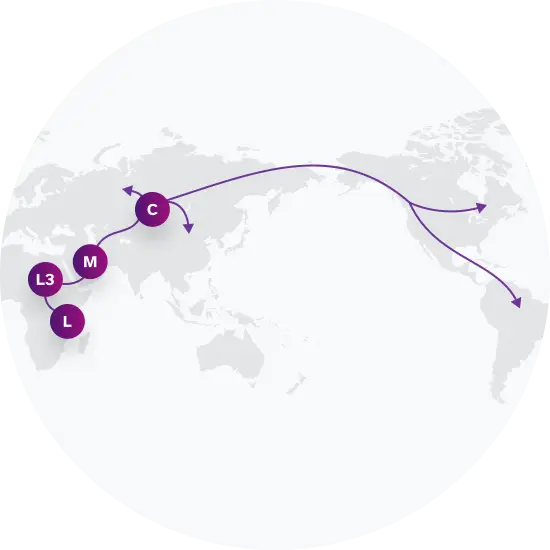Haplogroup C
What is Maternal Haplogroup C?
Haplogroup C is a genealogical group of lineages defined by unique genetic markers present in your mitochondrial DNA, which is transmitted from your mother. Your maternal haplogroup paints a picture of your ancient origins and the migrations of your ancestors. Although your maternal haplogroup reflects just one of your many ancestral lineages, it carries information about that lineage over tens of thousands of years.
Among 23andMe research participants, haplogroup C is commonly found among populations in Mexico.
It's important to note that your haplogroup doesn't define your current ethnic identity; rather, it provides an insight into your deep ancestry on the maternal side.
 Maternal Haplogroup Origins C
Maternal Haplogroup Origins CTop Surnames with Haplogroup C
For surnames with sufficient representation in the data, these percentages represent the frequency with which each surname is found in individuals exhibiting this genetic marker.
Haplogroup C is linked to the people of Lajia
In the early 2000s, researchers found members of haplogroup C in Lajia, an archeological site along the Yellow River in Qinghai. The people of Lajia were frozen in time between 3,800 and 4,000 years ago, at the cusp of the Bronze Age in East Asia. Their culture, called the Qijia, was one of the first in the region to have bronze tools, from knives and axes to the earliest mirrors.The Qijia culture in turn was a part of the Di-Qiang confederation of tribes in the north who influenced the cultural landscape across all of China. During the early centuries of the Bronze Age, some branches of the Di-Qiang mixed with local tribes to the east where they gave rise to the Huaxia, the forebears of the Han. Meanwhile, others moved to the southwest where they joined with Tibeto-Burman speaking groups, whose descendants are now found across southern China.
 Lajia provided a snapshot of life in the Yellow River region 4,000 years ago.
Lajia provided a snapshot of life in the Yellow River region 4,000 years ago.